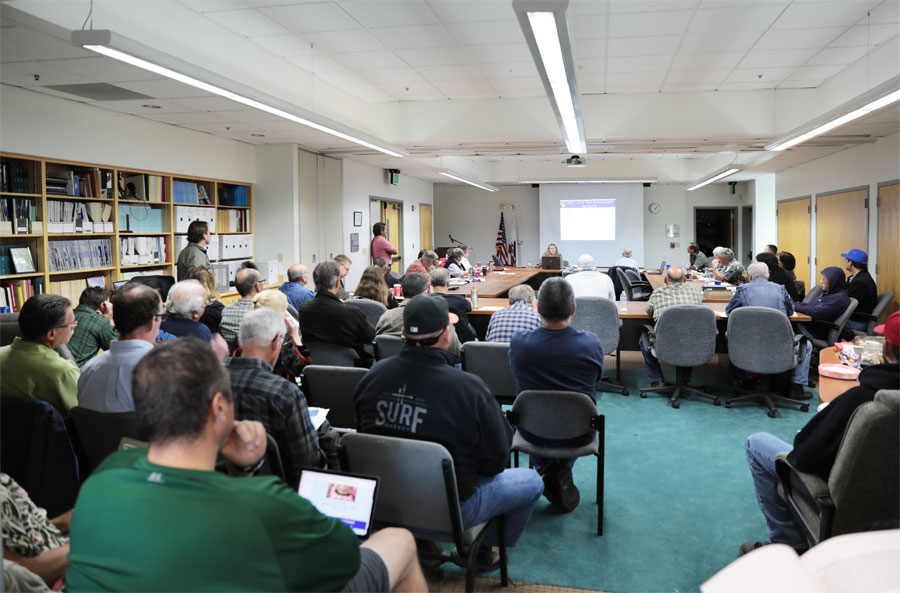After shortening the abalone season by two months in 2017 and reducing the annual season limit from 18 to 12 per diver, the California Fish and Game Commission is now recommending even further restrictions for abalone divers in 2018. It’s a move aimed at saving the reduced populations of red abalone, and also one that will no doubt be disappointing to avid north coast abalone divers.
Sonke Mastrup, the environmental program manager at the California Department of Fish and Wildlife’s Invertebrate Program, told the commission in a meeting last Thursday that further limits will need to be considered for 2018 due to the invertebrates showing more signs of distress due to a massive kelp die-off.
The red abalone’s primary food source is kelp, which has declined significantly over the past 3 years due to warming waters brought by El Niño conditions. On top of that, sea star numbers have dropped due to a wasting disease. Because sea stars eat sea urchins, the urchin population exploded. Urchins eat kelp and are now grazing the sea floor bare, leaving nothing for abalone to eat. “It was a perfect storm of events,” said Sonke Mastrup at a public meeting last November in Cotati.
The large-scale kelp die-off took place following the 2015 El Niño conditions, where sea temperatures increased. According to recent surveys, there are no signs that kelp is growing back. The kelp is the primary food source for both red abalone and purple sea urchins, who are in stiff competition with each other.
“We recommend trying to put the limit of nine back on the table and additional restrictive measures up to, and including, closures,” said Mastrup by phone on Friday. The commission will have to make a decision on those recommendations after more surveys are done in August.
Equally concerning for biologists is not just that the current red abalone population is dying off, but that the current population is not reproducing. Red abalone are not able to reproduce under starvation conditions, and because they take 10 to 12 years to reach the legal size for harvest, there is growing concern is for future populations.
In 2017, April and November were removed from the calendar for harvesting red abalone. Divers may not use scuba gear, and the limit is three abalone per day with a maximum limit of 12 per season. The 2017 season reduction was the first April since 1921 that red abalone could no be legally harvested.
The commission has not made any decisions or recommendations yet, but will likely do so after more surveys are done in August. Based on current findings, it’s highly unlikely that limits will be increased, and further restrictions could include reduced take limits, regional closures, or even a full closure of the fishery.


